Mobile Elevated Work Platforms (MEWPs), formerly known as Aerial Work Platforms (AWP) are machines / devices intended for moving persons, tools, and material to working positions, consisting of at least a work platform with controls, an extending structure, and a chassis.
MEWPs are necessary for a variety of activities at UVA, including maintenance. Imagine going to a basketball game at JPJ or a play at Culbreth Theatre with no lights. Thanks to the use of a MEWP in the Drama and Athletics Departments they can change the lights and perform any necessary maintenance safely when needed.
Some of the most common hazards are falls from elevations, tip overs, ejections due to sudden jolts, objects falling on workers, ejections from the platform, contact with ceilings and other objects. Proper training and following the safety guidelines will reduce the risk of these hazards.
The Occupational Safety & Health Administration (OSHA) and American National Safety Institute (ANSI) have implemented new standards for the safe use of MEWPs. As a department or operation that utilizes MEWPs, responsibilities include, but are not limited to the following:
Training
Operators must be trained and certified on each type of MEWP they operate. Formal training includes a written exam, hands on evaluation and recertification every three years by a qualified person. According to the ANSI standard, a qualified person is experienced with the particular classification of MEWP and knowledgeable regarding laws, regulations, safe use practices, manufacturer requirements recognition and avoidance of hazards. Contact the MEWP Manufacturer for your training needs.
Inspections
Perform a documented pre-inspection, prior to the start of the work and ensure an annual inspection is performed with additional items required by the manufacturer. Inspections should be retained for at least three years. Refer to the MEWP manufacturer for inspection information.
Risk Assessment
ANSI requires that a risk assessment be completed prior to starting the work/task by an authorized operator or supervisor, and the findings must be shared with everyone working on or around the MEWP prior to the work beginning. A risk assessment (pdf) evaluates the risks (hazards) for the work being done and identifies the control measures to eliminate or minimize the hazard. It should also include a rescue plan in the event of a fall, the operator is sick or injured, or the MEWP breaks down.
EHS will follow the ANSI A92 standard in determining Fall Protection requirements for MEWPs.
MEWPs that are manually propelled elevating work platforms or self-propelled elevating work platforms do not require the use of personal fall protection. The guard rails are designed to serve as the primary fall protection. These lifts stay within the chassis or tipping lines and are generally referred to as manlifts or scissor lifts. Examples:

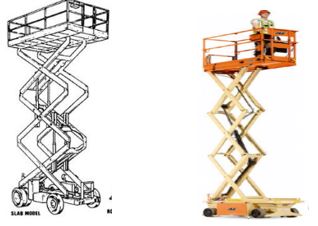
Note: Some manufacturers of scissor lifts state personal fall protection required. In this case you must follow manufacturer recommendation.
MEWP's that can move beyond the machine's chassis or tipping line (wheels or outriggers) require the operator and any occupants to wear personal fall protection. These are generally referred to as articulating or boom lifts. Examples:
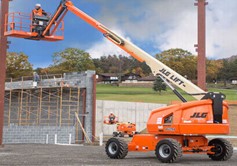
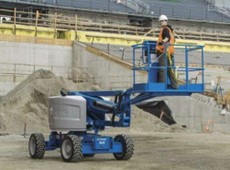
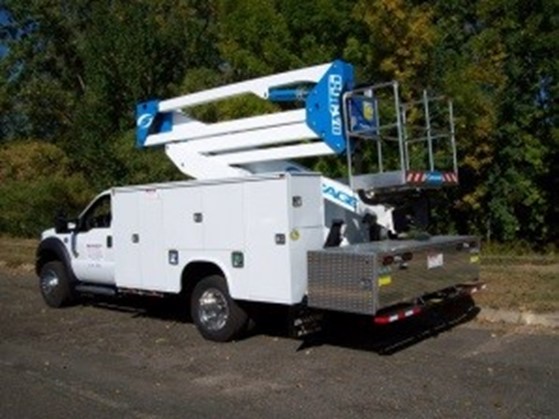
Refer to Environmental Health & Safety's (EHS) Fall Protection Guideline – Personal Fall Arrest Equipment and Inspection. EHS can advise on equipment training requirements.
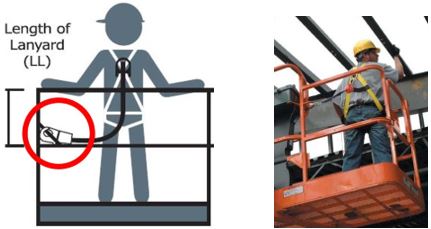
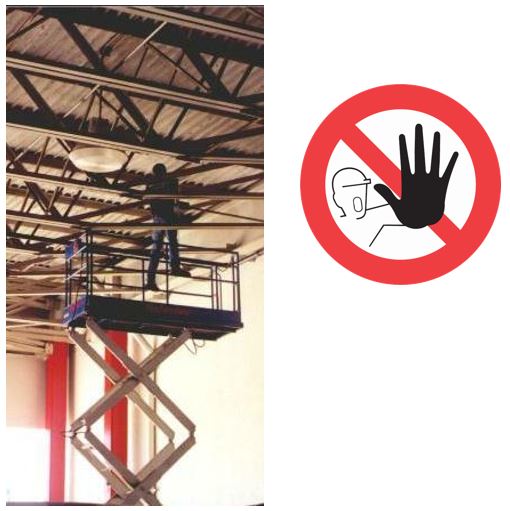
Consultation Available from Environmental Health & Safety (EHS)
The EHS Fall Protection Competent Person can assist you in evaluating the appropriate fall protection for MEWP operation. Please contact EHS at 434.982.4911 to schedule a consultation.
MEWP Operator Safety Resources: